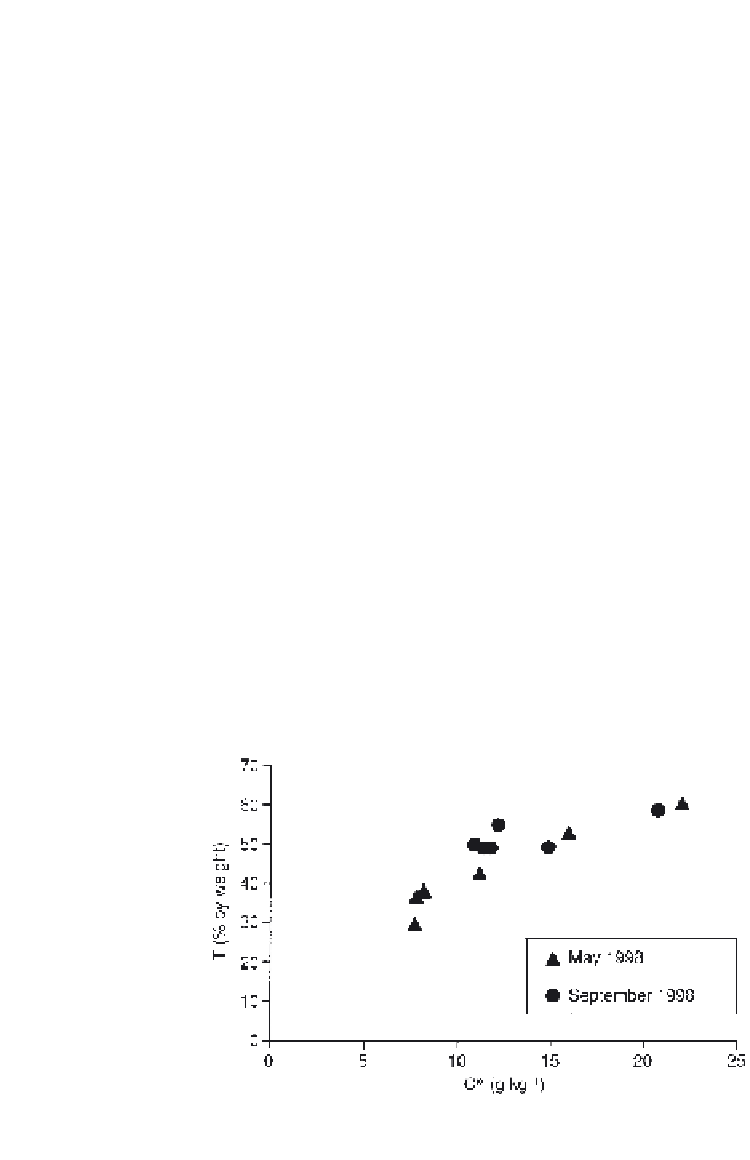Agriculture Reference
In-Depth Information
5-year period of crop rotation following the 2 years of perennial grass-
clover mixture. The total amount of 0.5-7.0 mm dry aggregates was equal
to 60-74% (spring wheat) and 56-80% (perennial grass-clover mixture).
The total amount of dry aggregates usually decreased by 4-20% from
May to September, with almost no change under the influence of the
conventional and minimum tillage. The conventional and minimum tillage
did not significantly affect the total amount of the 0.5-7.0 mm water-stable
aggregates, although they did affect the total organic matter content.
The total amount of 0.5-7.0 mm water-stable aggregates was higher
after establishment of the grass-clover mixture, especially after the second
year, than after spring wheat (Table 3.15.1). This presumably was due to
the greater input of organic matter originating from the grass and clover
plants in the pasture. An increase in total amount of water-stable aggregates
was observed during the growing period on the plots with perennial
grass-clover mixture and spring wheat. Data on the average diameter of
water-stable aggregates (Table 3.15.1) showed that the amount of large
water-stable aggregates rose from May to September. On the one hand, soil
wetting and drying and the consolidating action of thin roots and organic
matter particles possibly resulted in the observed formation of the large
water-stable aggregates in September. Over-winter processes seem to lead
to a breakdown of these aggregates into finer water-stable aggregates.
The correlation coefficients for the relationships between total amount
of 0.5-7.0 mm water-stable aggregates and organic matter content in these
aggregates were equal to 0.97 (in May) and 0.75 (in September) for the
grass-clover mixture for both tillage treatments (Fig. 3.15.1). In contrast
to the humified organic matter, the fresh organic matter accumulated by
the end of the growing period played a minor role in the water-stable
Fig. 3.15.1.
Relationship between total amount of 0.5-7.0 mm water-stable aggregates (T) and
organic carbon content in the water-stable aggregates (C
*
).











Search WWH ::

Custom Search